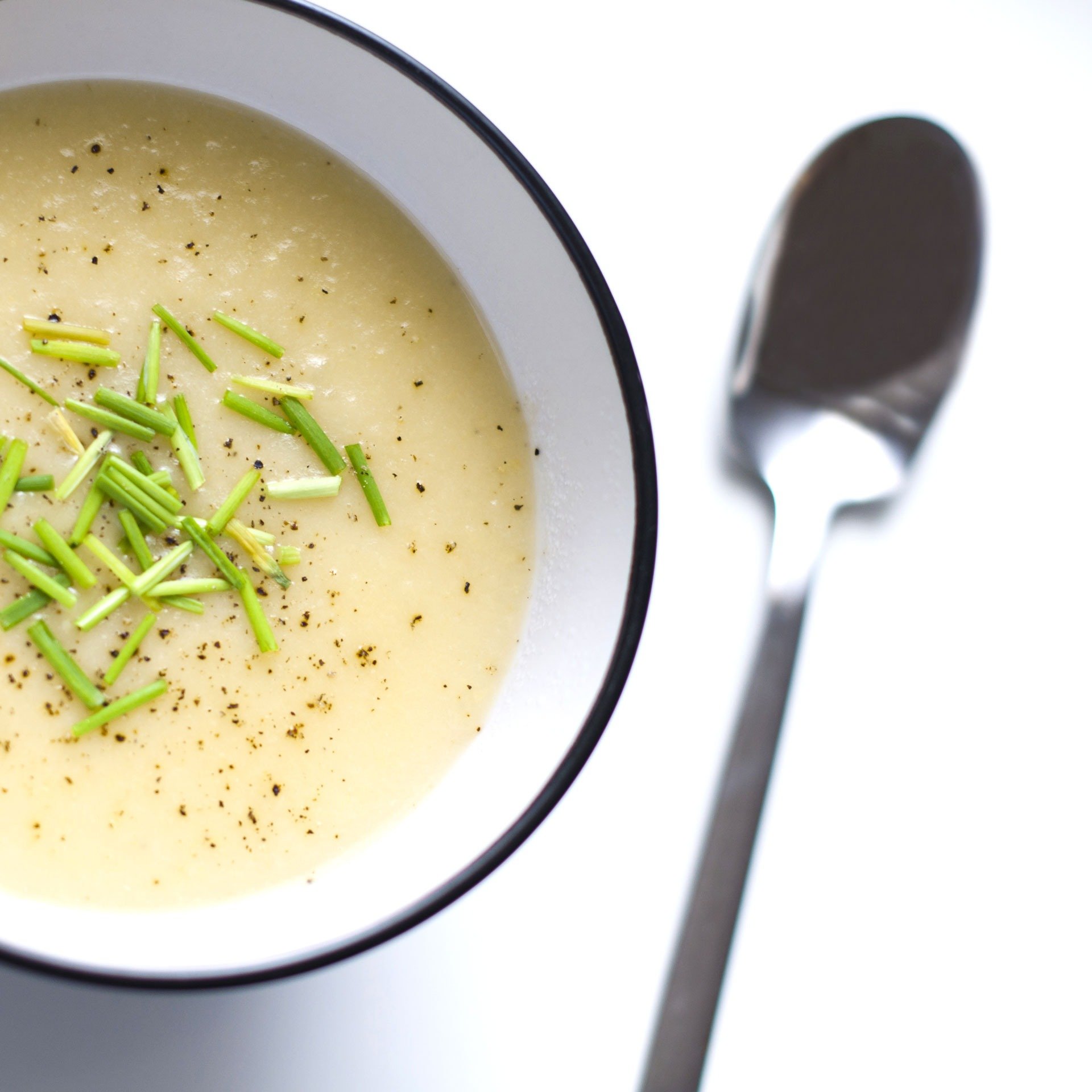Real Food Encyclopedia | Parsnip
The stories are true – the parsnip (Pastinaca sativa) does look an albino carrot, usually a shade of pale yellow, ivory or off-white. Contrary to popular belief, the parsnip is not a genetic mutation of the carrot, but the two are botanically related. The parsnip tends to have a thinner tip and typically is sold without its green tops, which can irritate the skin.
As sweet as the carrot is, the parsnip is even sweeter. In fact, a frost will intensify its sugar content and residual sweetness. Vegetable gardeners claim that the parsnip is one of the few root vegetables that happily stays underground to “winter over,” a nifty tip for those gardeners with limited indoor storage space.
Fun facts about parsnips:
- Easily fermented, the parsnip was made into both beer and wine, a practice that continued on the other side of the Atlantic well into the 19th century.
- Before the parsnip made its way to colonial America, it stopped off in the West Indies, which was too hot for the cold-loving root. First colonial stop was Virginia, then it migrated further north to Massachusetts and was revered by Native American tribes.
What to look for when buying parsnips
The perfect parsnip sounds like a bit like something out of Goldilocks: Firm but not woody, and definitely not too soft. One should not be able to bend a parsnip.
Sustainability of parsnips
Because they are not grown on a massive scale, parsnips are excluded from the Environmental Working Group Shopper’s Guide to Pesticides in Produce.
Seasonality
Depending on where you live, you may find parsnips in your supermarket produce aisle, but more likely at the farmers’ market. The parsnip is a great example of seasonal, local produce that is truly at its peak during the coldest months of the year. Buying parsnips from local farmers presents a great opportunity to ask growers about production methods as well as recipes and favorite ways to prepare. For two thirds of the country, you’ll see parsnips until the early weeks of spring.
Eating Parsnips
Storing
Remember, this is a hardy vegetable suitable for storage — so long as you keep it dry. Wrap in a towel or perforated bag, and your parsnips should keep for a few weeks. Wash and peel just before cooking.
Cooking
Roasting coaxes the nuttiness out of parsnips, but many cooks do a quick parboil to help soften the starch first. Before coating in fat for roasting (or sautéeing), be sure to towel dry the parboiled parsnips or you’ll end up with steamed parsnips instead.
The next time you’re making mashed potatoes, add one or two quartered parsnips to the mix, along with a whole clove of garlic. You’ll end up with a mash that’s a little bit earthier, with a hint of sweetness and a whole bunch more nutrients.
You can add parsnips into any dish that you would add a root or vegetable to. In her new cookbook “Roots,” Diane Morgan suggests adding sautéed diced parsnips to spaghetti carbonara for a twist on an old classic.
Parsnips like warm spices – ginger, nutmeg, cinnamon, curry, cardamom, as well as sugar in all forms, from maple syrup to the granulated stuff. For a sweet approach, try this technique for poaching parsnips in coconut milk from “The Organic Cook’s Bible” by Jeff Cox: “Poach quartered roots in barely simmering coconut milk until almost tender, then finish by sautéeing them in a little butter with a pinch of salt, and at the end add a splash of coconut milk from the poaching liquid and reduce it until it glazes the roots.”
Morgan also has a recipe for a triple layer parsnip cake, an idea that might seem peculiar on first blush. But as mentioned earlier, parsnips are even sweeter than carrots, which make it into baked goods all the time. Why not parsnips in the bakery case?
Nutrition
Parsnips can do your body good. One cup of raw parsnips contains six grams of fiber, at 100 calories. It’s rich in potassium and a respectable source of calcium, iron, Vitamin C and folate. It is being studied for its cancer-fighting properties, which come from a phytochemical called falcarinol.
Top photo by Olha Afanasieva/Adobe Stock.


